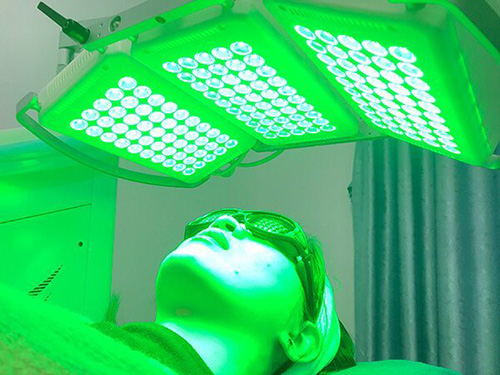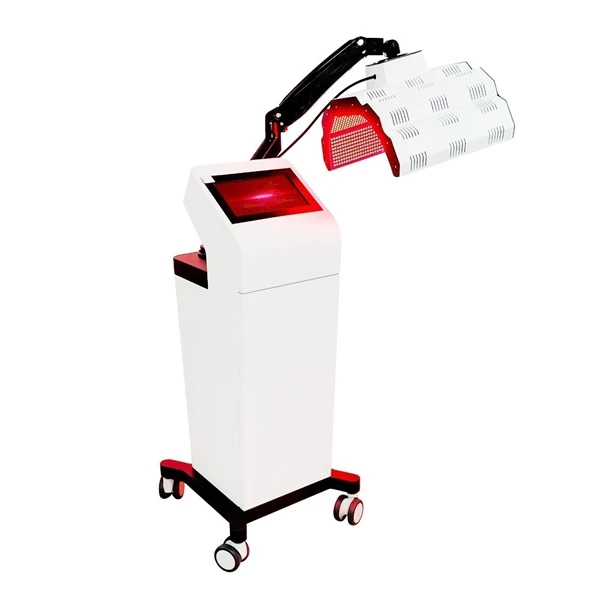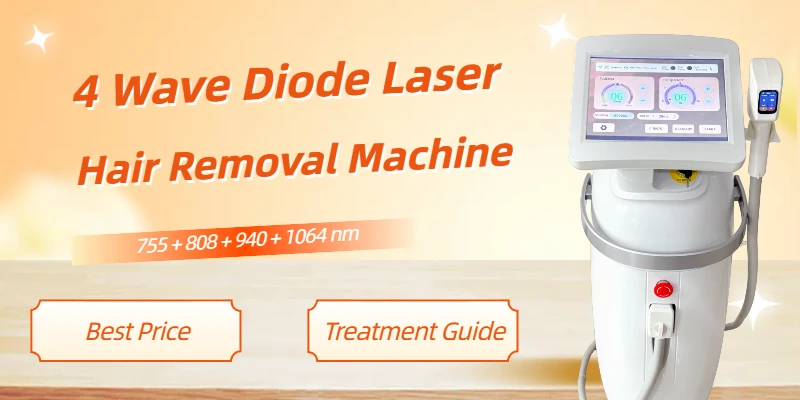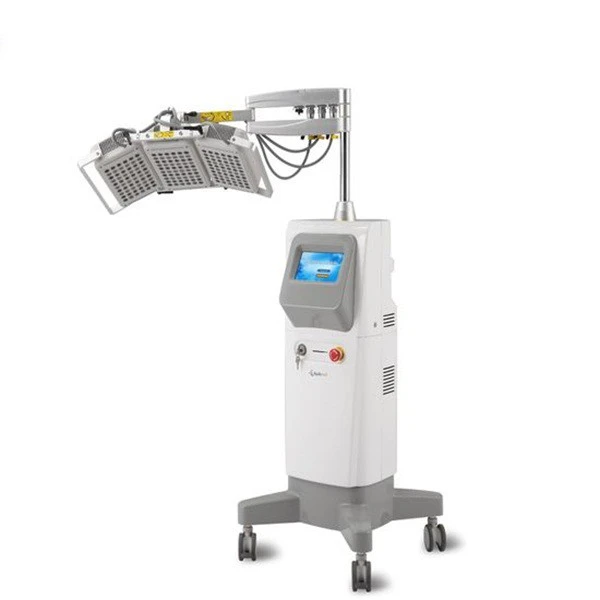Introduction
Red, blue, and yellow light therapy is a commonly used low-intensity phototherapy method in clinical practice. It can be directly used to treat skin diseases, and red and blue light is also one of the main light sources for photodynamic therapy.
To improve the efficacy and safety of red, blue, and yellow light therapy, specific recommendations for its standardized application in dermatology are needed for clinicians’ reference.
Today, let’s learn about the key points of the “Expert Consensus on the Clinical Application of Red, Blue, and Yellow Light Therapy for Skin Diseases (2025 Edition)”.
Overview of Red, Blue, and Yellow Light
The wavelengths of red, blue, and yellow light are as follows: visible light between 625-700nm (red light), 400-500nm (blue light), and 570-595nm (yellow light).
In clinical treatment of skin diseases, commonly used wavelengths are 630-670nm for red light, 415-417nm for blue light, and 590-595nm for yellow light.
Note: Currently, most PDT photo therapy machines used in dermatology clinics use LEDs as their light source.
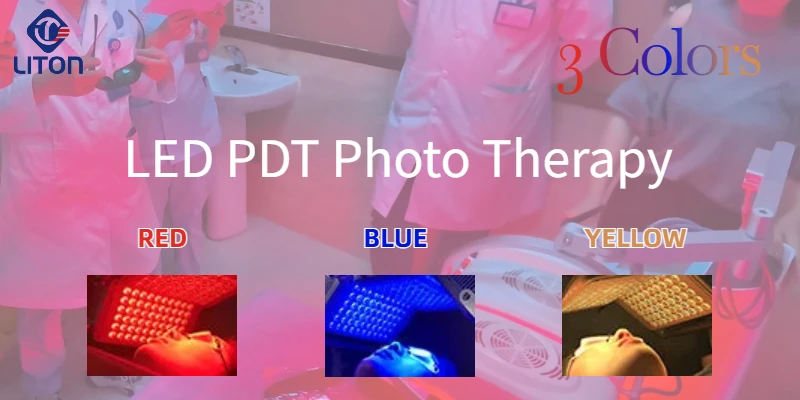
Indications and contraindications
1. Indications for phototherapy
- LED red light therapy clinical applications: acne, androgenetic alopecia, skin wounds, herpes zoster, photoaging, radiation dermatitis, etc.
- LED blue light applications: acne treatment, acute dermatitis and eczema, herpes zoster, reducing sebum secretion, skin rejuvenation and wrinkle reduction (often used in combination with red light), neonatal hyperbilirubinemia.
- LED yellow light clinical applications: can be used to treat rosacea, seborrheic dermatitis, melasma, etc., especially suitable for sensitive skin or those who need to lighten pigmented lesions.
2. Contraindications for phototherapy
Situations where it is absolutely contraindicated: Individuals allergic to red, blue, or yellow light; individuals with porphyria.
Situations requiring caution: Patients with photosensitivity disorders (such as lupus); individuals with hypersensitive skin.
Eye exposure is strictly prohibited to avoid damage. Dark glasses, wet wipes, or tissues can be used to cover the eyes to prevent cataracts and retinal damage.
Wounds should be cleaned before irradiation. Use with caution on fresh scars, and the dosage should not be too high due to poor local blood circulation, which could cause burns.
Use with caution in patients with bleeding tendencies, photosensitivity, malignant tumors, acute purulent inflammation, severe heart and kidney diseases (heart failure, myocarditis, uremia, etc.), active pulmonary tuberculosis, high fever, and in the abdomen and gonadal areas of pregnant women.
3. Special populations
Pregnant and breastfeeding women: No clear adverse reactions have been found. Red and yellow light are relatively safe, but a doctor must assess the “benefits and risks” before treatment, and the light should never be applied directly to the abdomen of a pregnant woman.
Children under 14 years old: Treatment requires the consent of a guardian, depending on their level of cooperation (e.g., wearing protective glasses, maintaining the correct position until the end of treatment).
Red + Blue + Yellow Light Therapy
1. Treatment of common skin diseases
| Acne vulgaris:
Red light or blue light therapy can be used alone, or a combination of both can be used sequentially to treat mild to moderate acne vulgaris. |
Red light: LED light source with a wavelength of (630±10)nm,
power density of 40~80mW/cm2, and energy density of 40~100J/cm2. |
| Blue light, an LED light source with a wavelength of (417±10) nm,
a power density of 20~40 mW/cm², and an energy density of 20~50 J/cm². |
|
| It is recommended to treat 2-3 times per week,
either with blue or red light alone, or with sequential therapy of red and blue light once a week, with a 3-day interval in between. A single course of treatment consists of 8-12 sessions, and treatment may be repeated depending on the progress of the patient’s skin lesions. |
|
| Skin wounds:
Red light irradiation alone can promote the healing of venous ulcers of the lower extremities, diabetic foot ulcers, pressure sores, and incisions after various surgeries. |
Red light with wavelengths of 630–685 nm has a
power density of 40–100 mW/cm² and an energy density of 40–100 J/cm². |
| It is recommended to irradiate once daily or every other day,
and the total number of treatments should be determined based on the wound healing process. |
|
| Herpes zoster and postherpetic neuralgia | Recommended red light at (630±10)nm,
power density 60~100mW/cm², energy density 100~200J/cm², irradiated once daily. |
| Photoaging | Red light, LED light source with wavelength (630±10)nm,
power density 40~80mW/cm², energy density 40~100J/cm², irradiated 2~3 times per week. |
| Yellow light, (590±10)nm LED light source,
power density 20~40mW/cm, energy density 20~40J/cm2, irradiated 2~3 times per week. |
|
| Melasma | We recommend using (590±10)nm LED yellow light
with a power density of 20~40mW/cm² and an energy density of 20~48J/cm², and irradiate it 1~2 times per week. |
Reminder:
When developing a red, blue, and yellow light therapy plan, the following factors should be considered: ① Type of light source; ② Measured power density (light intensity) on the skin surface; ③ Irradiation time; ④ Energy density; ⑤ Irradiation distance (distance between the light source and the lesion; LED light sources have an optimal irradiation distance); ⑥ Treatment frequency; ⑦ Number of treatments.
Energy density, power density, and irradiation time are important parameters for each light therapy session. The conversion formula between the three is as follows: Energy density (J/cm²) = Power density (W/cm²) × Irradiation time (s).
Due to the scattering characteristics of light, the actual power density decreases with increasing irradiation distance from the skin surface. Therefore, ensuring a suitable irradiation distance is crucial for ensuring therapeutic efficacy. Treatment must be performed strictly according to the irradiation distance recommended in the machine’s instruction manual.
2. Photodynamic light source
Due to the advantage of red light’s deeper penetration, dermatologists often use red light as the irradiation source for ALA-PDT. Commonly used light source emitters include semiconductor lasers, helium-neon lasers, and LED light sources. Depending on the treatment needs of different diseases, the recommended energy density of red light irradiation is 60 ~ 200 J/cm2, and the power density is 40 ~ 150 mW/cm2.
More Treatment Details
1. Treatment Procedure
Informed Consent: Explain the purpose of red, blue, and yellow light therapy and possible adverse reactions to the patient, and obtain informed consent.
Pre-treatment Preparation: Clean the treatment area and appropriately shield non-treatment areas.
Treatment Position: The patient assumes an appropriate and comfortable treatment position, fully exposing the treatment area, and maintains this position until the end of treatment.
Treatment Protection: The patient wears suitable light-shielding glasses correctly, and the operator wears professional goggles designed for the specific wavelength.
Treatment Procedure: Set appropriate treatment parameters and adjust the distance between the light source and the treatment area; turn on the light source and inquire if the patient experiences strong light sensitivity, burning sensation in the treatment area, or other discomfort. After treatment, inquire again if the patient experiences any discomfort and observe the treatment area for any adverse reactions such as erythema. Inform the patient of the next treatment time.
2. Precautions
Independent treatment space: If multiple treatment devices, chairs, or beds are located in the same room, they must be separated by blackout curtains.
Strict eye protection measures: Operators, patients, and caregivers must wear appropriate protective eyewear when entering the red, blue, and yellow light therapy room. Patients must take strict measures to protect their eyes from light during treatment.
Regular maintenance and power density testing of the red, blue, and yellow light therapy devices are necessary to ensure the accuracy and reliability of actual treatment parameters.
3. Adverse Reactions and Management
Red, blue, and yellow LED light therapy is a relatively safe treatment method with few and mild adverse reactions; no serious adverse reactions have been reported to date.
Adverse Reactions: Red light typically causes a burning sensation and intense light in the treated area; blue and yellow light can cause discomfort such as dry skin, itching, and mild erythema. Blue light can even cause skin peeling and pigmentation in the treated area.
Treatment Measures: For burning sensations, the position of the light source can be adjusted appropriately to alleviate discomfort, or intermittent light therapy can be used; for dry skin, itching, and peeling, moisturizing cream can be applied topically for symptomatic treatment; skin pigmentation is generally mild and will improve and recover spontaneously after discontinuation of treatment.
High-quality LED/PDT Phototherapy Machine
Red, blue, and yellow LED phototherapy machines have significant applications in skin rejuvenation, offering positive improvements for most skin conditions. Different colors of light are used for different cosmetic purposes and can be used individually or in combination.
If you require a high-quality, multi-color (up to 7 colors) LED/PDT phototherapy machine, please contact Liton Laser. More details can be found on the LED Light PDT Photon Therapy Machine page.
Frequently Asked Questions
Q1: How many colors of light can an LED light therapy machine have at most?
Liton Laser offers LED light therapy devices with up to 7 colors, including red, blue, yellow, green, purple, pink, and near-infrared.
Q2: Is LED photo therapy using PDT equipment safe?
LED light therapy machines are non-invasive treatments that use a cold light source and are not lasers. They are considered very safe devices for cosmetic treatments.
Q3: How should I purchase LED light therapy machine or PDT phototherapy device?
If you need a high-quality LED/PDT phototherapy machine, then you should look to Liton Laser. We are a professional manufacturer of aesthetic and medical equipment, providing medical-grade phototherapy machines.
Conclusion
The 3-color (red, blue, yellow) LED phototherapy machine has sufficient clinical usage data. Different light colors have different indications, and multiple light combinations can also be used for treatment.
The results of phototherapy are greatly affected by the machine’s power intensity (light intensity). Therefore, for better treatment results, please choose a PDT device with a high-power bulb.



